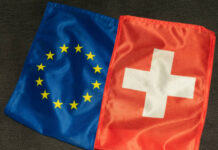Markets
EUR/USD tested 1.0778 for a second straight session as disappointing French PMI surveys kicked off European dealings. The French composite PMI got stuck deeper in recession territory (47.3 from 48.6) while consensus expected a minor improvement compared to last month (48.9). With the French business surveys however, the worse (European) news was immediately digested. German PMI’s showed an unexpected improvement (composite 48.4 from 47.5 vs 47.6) and both countries accounted for the second consecutive (minor) drop in business activity on an EMU level (composite 49.7 from 49.6). The rest of the eurozone saw output increase at the fastest level in four months. Output was scaled back in response to a weakening demand environment, with new orders down for the fifth consecutive month. Companies responded to lower workloads by reducing employment to the largest degree in almost four years (centred on manufacturing, near stagnation in services), while business confidence dropped to an 11-month low. There was again a divergence between manufacturing (45.9 from 45) and services (51.2 from 51.4). Input costs increased again, but the pace of inflation eased further and was the lowest in just under four years. Output prices rose at a modest pace that was the slowest since February 2021, as a rise in services charges just outweighed a fall in manufacturing selling prices. Higher services costs nevertheless remain a worry for the ECB. While PMI’s obviously were a grim reading, at least they didn’t deteriorate further or drop below consensus estimates. While we still get the November surveys, the October release justifies another 25 bps rate cut by the ECB in December instead of an acceleration to 50 bps. EUR/USD “rebounded” towards 1.08 with front end European yields coming off the intraday lows. At the time of writing, German yields remain 4 to 5 bps lower across the curve though. US eco data included an unexpected decline in weekly jobless claims (227k from 242k vs stabilization expected) and slightly better US PMI’s. Manufacturing remains mired in recession (47.8 from 47.3) while services are strong (55.3 from 55.2). Details showed robust output and sales growth while selling prices rose at the slowest rate since May 2020. Businesses nevertheless remain cautious about hiring, leading to a third month of modest payroll reductions. PMI’s didn’t trigger a directional market move.
News & Views
Czech National Bank policymaker Jan Prochazka broke the relative silence surrounding the central bank lately. Prochazka said that weaker growth abroad and a slow domestic demand recovery would allow the CNB to keep cutting the policy rate (4.25%) but warned for potential inflation hotspots. Money markets currently expect about two more 25 bps cuts at each of the remaining meetings this year. The November 7 one will showcase updated forecasts as well as potential changes as to how they are made and communicated based on external reviews that are underway. Prochazka said he expected a growth downgrade for 2025, saying the current above-potential 2.8% is too high. A “bad mood” weighs on consumer spending and the external environment (Germany) may worsen in coming months. While inflation is currently within the CNB’s tolerance range (2% +/- 1 ppt), the headline figure may break above 3% again in December. The Czech policymaker was also worried about rising services prices at a pace of around 5%. In its meeting-by-meeting approach the CNB keeps a close eye at the evolution of the CZK as well. The Czech currency trades in a tight sideways trading range around the 2-year lows of EUR/CZK 25-25.5.
UK Chancellor Reeves confirmed in the Financial Times a report that appeared in the Guardian yesterday that cited a senior government source saying she would target a different metric of “debt”. Replacing the current one (public sector net debt excluding the BoE) by the one known as Public Sector Financial Liabilities (PSNFL) would give Reeves additional headroom of >£50bn by the end of the decade under the Treasury’s March forecasts and still have debt falling over five years’ time. Sources said that Reeves would not rush to use all of the extra borrowing though. Nevertheless, today’s clear underperformance of UK gilts compared to German and US peers does reveal some nervousness going into next week’s Budget presentation. UK yields rise 3-4 bps across the curve.












